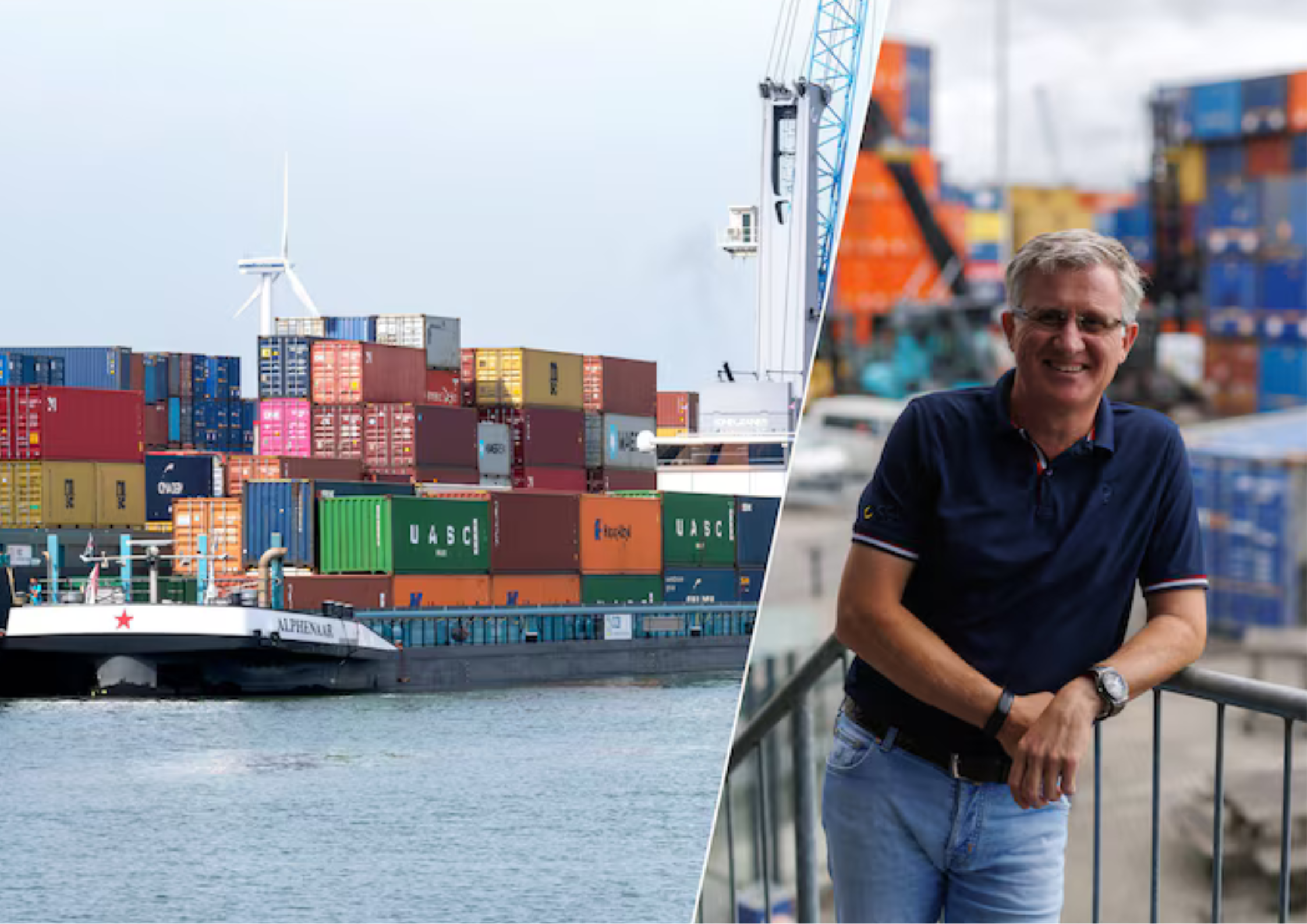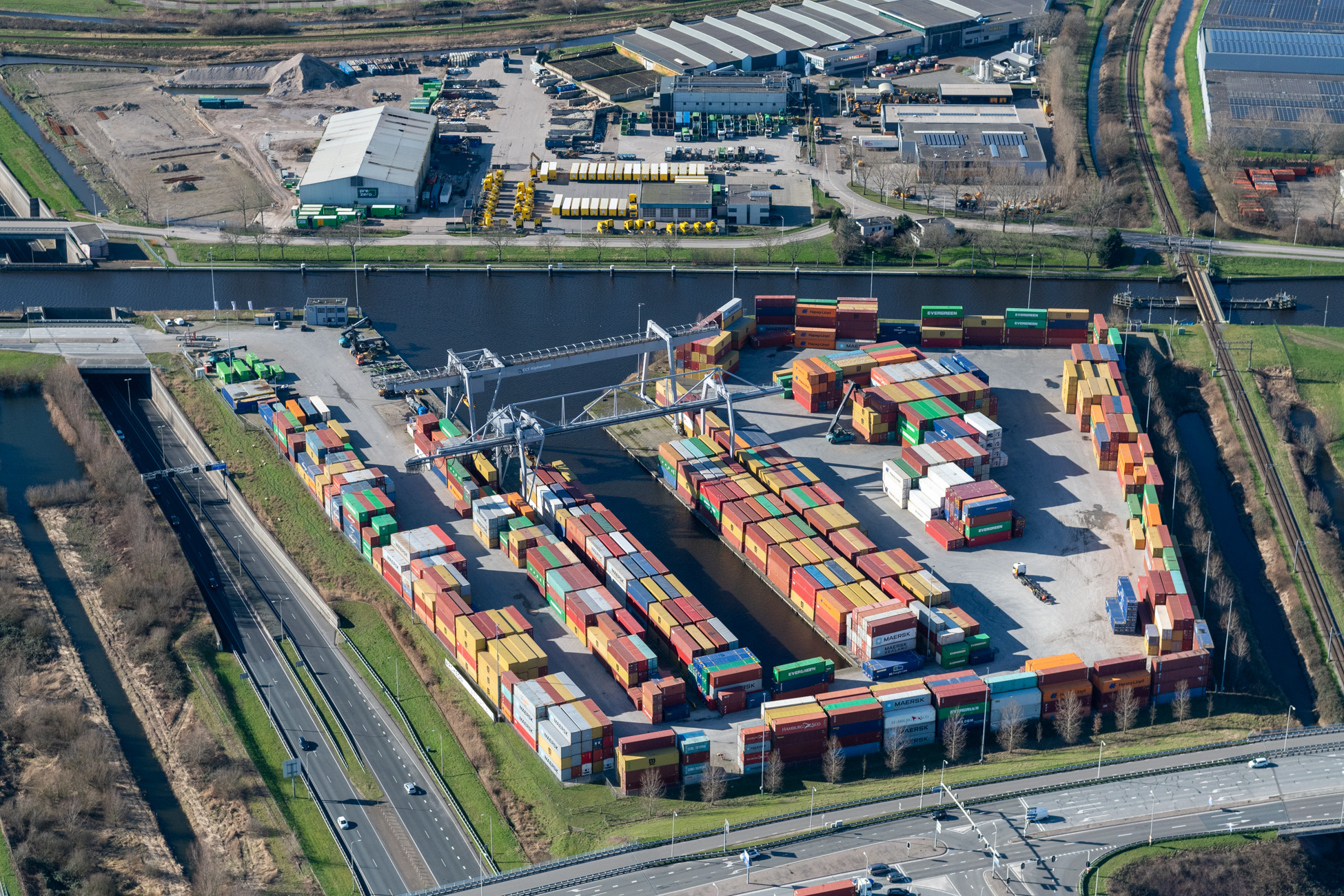AD Article: Moerdijk company sails electric for 4 years: “That’s the bad luck of being the first”
What advice would today’s Luc Smits have given himself in 2019 regarding his plan for the Netherlands’ first electric inland vessel? “Don’t even think about it,” was the honest answer from the director of CCT Moerdijk. “You might not want to hear it, but it’s taken so much time and money.”

You don’t hear it, you don’t smell it, but you can certainly see it. A fully electric inland vessel offers many sustainable advantages, but it also requires a significant investment. Especially if you’re the first. Transporting containers on a sustainable vessel was a key request from a major client of Moerdijk-based CCT, a stevedoring company that tranships containers and goods via water, rail, and road for transport between the ports of Rotterdam, Antwerp, and other European destinations. “At one point I said: ‘It’s time to stop talking and take the plunge. Let’s all put in an extra €150,000 as a learning experience,'” Smits says about the preparations for the project.
Peak in electricity prices
That deep dive led to the first voyage in the second half of 2021. Since then, the Alphenaar has been sailing between the port of Moerdijk and the container terminal in Alphen aan den Rijn.
On board are two battery containers from the company Zero Emission Services. Each container generates 2 megawatts of green electricity, comparable to the capacity of 36 electric cars. This allows the ship to sail a total of about 120 kilometers, usually just enough to travel back and forth between Alphen aan den Rijn and Moerdijk. In Alphen, the containers are then connected to chargers, and other, fully charged battery containers are ready for the next voyage.
It cost almost a million euros to get the ship sailing. That would However, the investment will be recouped within the foreseeable future. An electric ship requires much less maintenance and lasts longer. But then came the huge spike in electricity prices. “It went through the roof,” says Smits. “The price of diesel has also risen, but not as sharply. As a result, we are now 35 percent more expensive to run than a diesel ship.”
“You’re sailing between houses, so you want to be clean and quiet.”
-Luc Smits
Polluting diesel engines
It’s the sustainable flagship of Dutch inland shipping, but for an entrepreneur, it’s a bit of a bitter pill to swallow. This is partly due to the ship’s variable reliability. Nevertheless, Smits is convinced that inland shipping has an electric future. “Anyone sailing between homes wants clean and quiet.”
A major disadvantage of diesel ships is that they also run, and therefore emit emissions, when they’re in port. Not every port offers shore power yet, and ships do need power to operate their onboard equipment, which can also be generated by the diesel engine.
“A colleague bought an LNG ship 10 years ago. That was supposed to be the future. Well, he’s not going to be able to sell that ship for nothing now.
Smits notes that making his operations more sustainable is also important for attracting or retaining major clients. It’s also beneficial for his own wallet for another reason: electric motors require less maintenance. “That’s good because of the costs, but also because it’s difficult to find technical staff.”
Challenges due to erratic policy
Behind the scenes, CCT is trying to make all aspects of sustainability more sustainable: including road, rail, and transshipment. However, this isn’t easy. The company is facing several challenges. It’s been denied a building permit because it’s located next to a nature reserve and there’s insufficient nitrogen dioxide capacity. The electricity grid is overloaded everywhere, and technical staff are hard to find. CCT switched to cranes that run on electricity instead of diesel, but was subsequently reprimanded by the environmental agency for using more electricity.
For him, this is a sign of the times regarding its erratic sustainability policy. “The government is pushing too hard and isn’t consistent. A colleague bought an LNG ship ten years ago. That was supposed to be the future. That’s changed completely, and he can’t sell it anymore. An example is the electrification of trucks. These trucks are heavier, which means tires wear out faster and more particulate matter is released.”
Second ship launched
And yet, Smits is hopeful about the electrification of inland shipping. The second electric inland vessel launched at the end of 2024, also in Brabant. Thanks to the training grant from De Alphenaar, the ship Den Bosch Max Groen, for example, can already sail much further. Smits: “To make significant progress, we need more technical improvements, electricity at an affordable price, and a larger electricity grid.”

